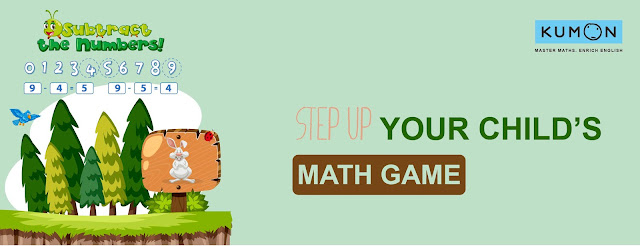Ways to Help Your Child Do Well In Primary Math
Effective teaching and communication are the best tools to help your child learn new math concepts. But first and foremost you need to understand your child’s appropriate learning level. If you don’t do that, it will be difficult for them to grasp the concepts and greatly hinder their learning process. It’s a fact very well understood by Kumon- a world-renowned after-school learning program that specialises in building a strong foundation in English and math. That’s why their approach is different.
Every child has his or her own learning pace. However, schools don’t offer this flexibility for kids to level up, at their own speed. Kids are expected to keep up with the school syllabus. This one size fits all attitudes is a flawed concept. What happens is that kids start to lose track of the lessons and instructions. So much so that it starts shaking their level of confidence. They start doubting their own ability. And doubt is the worst enemy at any age. It builds the idea of inadequacy and one starts believing that he/she is ‘not good enough’. That’s why at Kumon, they start by taking a diagnostic test. This helps them assess the child’s ‘just-right’ level of learning. Once the level is set they are assigned the appropriate study material also known as the Kumon small-steps worksheet. There’s no set time limit. Kids level up at their comfort and pace. In such no-pressure situation kids don’t feel the pressure to keep-up. This makes them more mentally prepared to learn. Thus what they learn becomes more effective.
Also, the worksheets are specially designed to inculcate self-learning and self-study. What it does is that it builds up a sort of mental exercise as kids try to figure out solutions. It also helps them retrace past mistakes. The instructors are available for guidance whenever the kids get stuck. The benefits of self-learning are immense because it helps the kid develop their critical thinking and logical reasoning skills. This means that in the long run they don’t get stumped by tricky equations and questions. What stands as a testament to this is the fact that the Kumon method has benefitted more than 4 million kids across the globe.
To understand your child’s math aptitude you can take a three step approach. First define an idea. For instance: ‘the number 5’. Say you show your 5 fingers and one by one you point them out by saying numbers starting from ‘one’ to ‘five’. The next phase is called recognising your idea of numbers. Say you place 5 toys in front of your child and ask them ‘how many toys’ there are. If your child correctly replies ‘five’ then this phase is called recognition. The kid has recognised the idea of numbers you tried to convey. The third phase is called comprehension. If you ask your child to give you five numbers of any items and he/she succeeds in doing that, you can successfully assume that your child has ticked the third box as well. If your child’s not getting the answers right, understand that it might have less to do with their comprehension and more to do with your instruction method. Sometimes it can even lead to math anxiety and avoidance altogether. That’s why it’s always better to seek expert help if the need arises.




Comments
Post a Comment